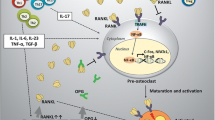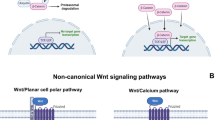Abstract
This study investigated the efficacy of adult adipose tissue-derived stem cells in restoring bone using an osteoporotic rat model. Thirty-six female Wistar rats (250–300 g, 12 weeks) were randomized into three equal groups: SHAM group (sham-operated), ovariectomy-induced (OVX) group and OVX with stem cell injection group (OVX with stem). Femur extraction and blood sampling were performed at 5, 6, 7 and 8 weeks. The proximal femoral metaphysis was scanned by micro-CT and evaluated for changes in various histomorphometric parameters. β-catenin expression was determined using H&E and immunohistochemistry. Bone metabolism was assessed using measurements of C-telopeptide of collagen type I (CTX), osteocalcin, and bone alkaline phosphatase (BALP). There was a trend for an increase in the bone mineral density (BMD), bone volume/trabecular bone volume (BV/TV) and trabecular number (Tb.N) in the OVX with stem group as compared with the OVX group, and decrease in the OVX with stem group as compared with SHAM group. The trabecular thickness (Tb.Th) and trabecular separation (Tb.Sp) of the OVX group were increased compared with those values in the SHAM and OVX with stem group. BALP levels were higher in the OVX group as compared with that in the other two groups and osteocalcin levels were highest in the SHAM group and slightly increased in the OVX with stem group as compared with the OVX group. This study may help us gain an understanding of the role of MSCs in the pathophysiology and treatment of osteoporosis.
Similar content being viewed by others
References
E Voskaridou, E Terpos, New insights into the pathophysiology and management of osteoporosis in patients with beta thalassaemia, Br J Haematol, 127, 127 (2004).
RH Christenson, Biochemical markers of bone metabolism: an overview, Clin Biochem, 30, 573 (1997).
JA Kanis, J Kanis, Assessment of fracture risk and its application to screening for postmenopausal osteoporosis: synopsis of a WHO report, Osteoporos Int, 4, 368 (1994).
S Khosla, BL Riggs, Pathophysiology of age-related bone loss and osteoporosis, Age, 60, 80 (2005).
AJ Friedenstein, Precursor cells of mechanocytes, Int Rev Cytol, 47, 327 (1976).
SB Park, YJ Lee, CK Chung, Bone mineral density changes after ovariectomy in rats as an osteopenic model: stepwise description of double dorso-lateral approach, J Korean Neurosurg Soc, 48, 309 (2010).
S Khosla, JJ Westendorf, MJ Oursler, Building bone to reverse osteoporosis and repair fractures, J Clin Invest, 118, 421 (2008).
BA Ashton, TD Allen, CR Howlett, et al., Formation of bone and cartilage by marrow stromal cells in diffusion chambers in vivo, Clin Orthop Relat Res, 294 (1980).
AI Caplan, Mesenchymal stem cells, J Orthop Res, 9, 641 (1991).
NA Hanania, KR Chapman, WC Sturtridge, et al., Dose-related decrease in bone density among asthmatic patients treated with inhaled corticosteroids, J Allergy Clin Immunol, 96, 571 (1995).
J Reeve, J Loftus, R Hesp, et al., Biochemical prediction of changes in spinal bone mass in juvenile chronic (or rheumatoid) arthritis treated with glucocorticoids, J Rheumatol, 20, 1189 (1993).
LJ Melton III, EA Chrischilles, C Cooper, et al., Perspective how many women have osteoporosis?, J Bone Miner Res, 7, 1005 (1992).
SC Miller, BM Bowman, WS Jee, Available animal models of osteopenia—small and large, Bone, 17, 117S (1995).
F Bauss, DW Dempster, Effects of ibandronate on bone quality: preclinical studies, Bone, 40, 265 (2007).
DN Kalu, The ovariectomized rat model of postmenopausal bone loss, Bone Miner, 15, 175 (1991).
J Gasser, Stem cells in the treatment of osteoporosis, Eur Cell Mater, 6, 21 (2003).
YJ Kim, HK Kim, HH Cho, et al., Direct comparison of human mesenchymal stem cells derived from adipose tissues and bone marrow in mediating neovascularization in response to vascular ischemia, Cell Physiol Biochem, 20, 867 (2007).
SW Cho, HJ Sun, JY Yang, et al., Human adipose tissue-derived stromal cell therapy prevents bone loss in ovariectomized nude mouse, Tissue Eng Part A, 18, 1067 (2012).
EL Fong, CK Chan, SB Goodman, Stem cell homing in musculoskeletal injury, Biomaterials, 32, 395 (2011).
R Pereira, K Halford, M O’hara, et al., Cultured adherent cells from marrow can serve as long-lasting precursor cells for bone, cartilage, and lung in irradiated mice, Proc Natl Acad Sci U S A, 92, 4857 (1995).
J Gao, JE Dennis, RF Muzic, et al., The dynamic in vivo distribution of bone marrow-derived mesenchymal stem cells after infusion, Cells Tissues Organs, 169, 12 (2001).
K Kumagai, A Vasanji, JA Drazba, et al., Circulating cells with osteogenic potential are physiologically mobilized into the fracture healing site in the parabiotic mice model, J Orthop Res, 26, 165 (2007).
R van Os, A Ausema, B Dontje, et al., Engraftment of syngeneic bone marrow is not more efficient after intrafemoral transplantation than after traditional intravenous administration, Exp Hematol, 38, 1115 (2010).
E Seeman, Estrogen, androgen, and the pathogenesis of bone fragility in women and men, Curr Osteoporos Rep, 2, 90 (2004).
C Bagi, P Ammann, R Rizzoli, et al., Effect of estrogen deficiency on cancellous and cortical bone structure and strength of the femoral neck in rats, Calcif Tissue Int, 61, 336 (1997).
O Barou, D Valentin, L Vico, et al., High-resolution three-dimensional micro-computed tomography detects bone loss and changes in trabecular architecture early: comparison with DEXA and bone histomorphometry in a rat model of disuse osteoporosis, Invest Radiol, 37, 40 (2002).
A Odgaard, Three-dimensional methods for quantification of cancellous bone architecture, Bone, 20, 315 (1997).
J Beck, B Canfield, S Haddock, et al., Three-dimensional imaging of trabecular bone using the computer numerically controlled milling technique, Bone, 21, 281 (1997).
PD Delmas, Biochemical markers of bone turnover, Acta Orthop, 66, 176 (1995).
MS Calvo, DR Eyre, CM Gundberg, Molecular basis and clinical application of biological markers of bone turnover, Endocr Rev, 17, 333 (1996).
P Meunier, C Salson, L Mathieu, et al., Skeletal distribution and biochemical parameters of Paget’s disease, Clin Orthop Relat Res, 37 (1987).
DY Kim, Biochemical markers of bone turnover, Korean J Nucl Med, 33, 341 (1999).
J Scariano, R Glew, C Bou-Serhal, et al., Serum levels of cross-linked N-telopeptides and aminoterminal propeptides of type I collagen indicate low bone mineral density in elderly women, Bone, 23, 471 (1998).
HW Woitge, M Pecherstorfer, Y Li, et al., Novel serum markers of bone resorption: clinical assessment and comparison with established urinary indices, J Bone Miner Res, 14, 792 (1999).
J Zhou, S Chen, H Guo, et al., Electroacupuncture prevents ovariectomy-induced osteoporosis in rats: a randomised controlled trial, Acupunct Med, 30, 37 (2012).
JR Hens, KM Wilson, P Dann, et al., TOPGAL mice show that the canonical Wnt signaling pathway is active during bone development and growth and is activated by mechanical loading in vitro, J Bone Miner Res, 20, 1103 (2005).
GI Im, Intracellular Signal Transduction Pathways and Transcription Factors for Osteogenesis, J Korean Rheum Assoc, 15, 1 (2008).
Author information
Authors and Affiliations
Corresponding author
Rights and permissions
About this article
Cite this article
Jeong, J.H., Park, J., Jin, ES. et al. Adipose tissue-derived stem cells in the ovariectomy-induced postmenopausal osteoporosis rat model. Tissue Eng Regen Med 12, 28–36 (2015). https://doi.org/10.1007/s13770-014-0001-3
Received:
Revised:
Accepted:
Published:
Issue Date:
DOI: https://doi.org/10.1007/s13770-014-0001-3




